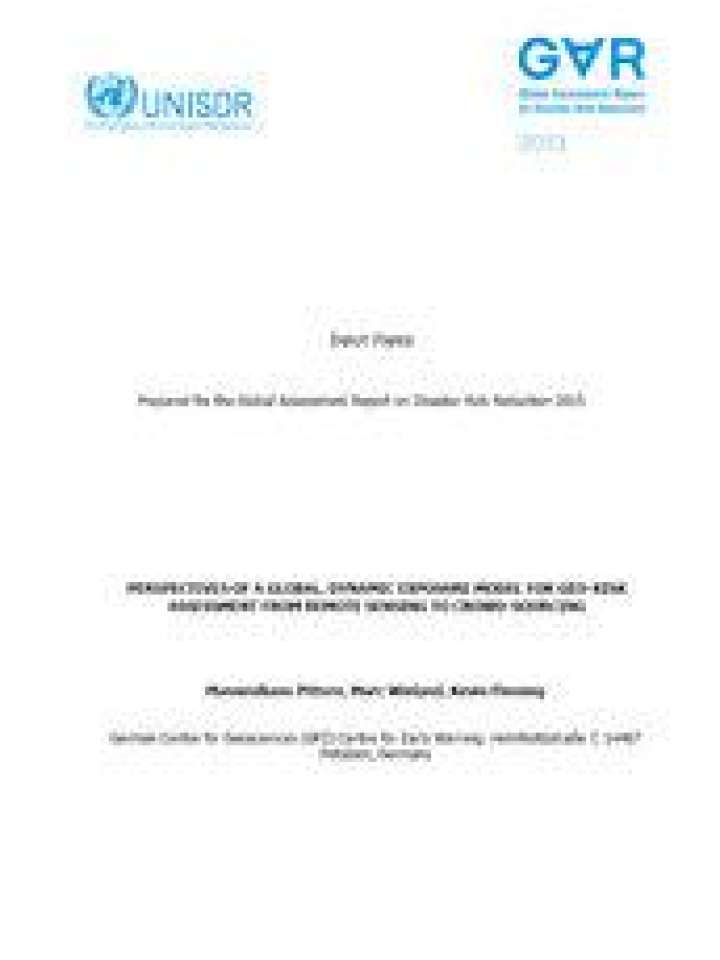Perspectives of a global, dynamic exposure model for geo-risk assessment from remote sensing to crowd-sourcing
The aim of the paper is to assess the challenge of implementing a global exposure model for different geo-hazards at the global scale within a dynamic, scalable framework. A global exposure model able to evolve would lay the basis for global vulnerability and risk assessment by providing reliable, standardised information on the exposed assets across a vast range of hazards.
The authors make the following recommendations to sketch a road-map towards the effective implementation of global, dynamic exposure databases (p. 20):
- A stronger collaborative effort among the world´s disaster risk reduction institutions is advocated to implement a unified exposure taxonomy, largely independent on the particular hazard.
- Rapid, large-scale data collection based on remote sensing should be fully exploited and whenever possible be integrated with in-situ information, employing multi-source and scale data sampling methodologies.
- Authoritative and non-authoritative sources should be integrated while ensuring quality standards and compliance with disaster risk reduction purposes.
- Exposure-collection should be regarded as a continuous process that is constantly evolving over space and time.
- Data and (statistical) models must coexist in a statistically sound framework in order to overcome the infeasibility of having a complete and fully enumerated global dynamic exposure database.
- Validation and quality assessment should be carefully assessed throughout the collection-description-dissemination process.
This document is an input paper of the 2015 Global Assessment Report on Disaster Risk Reduction.
